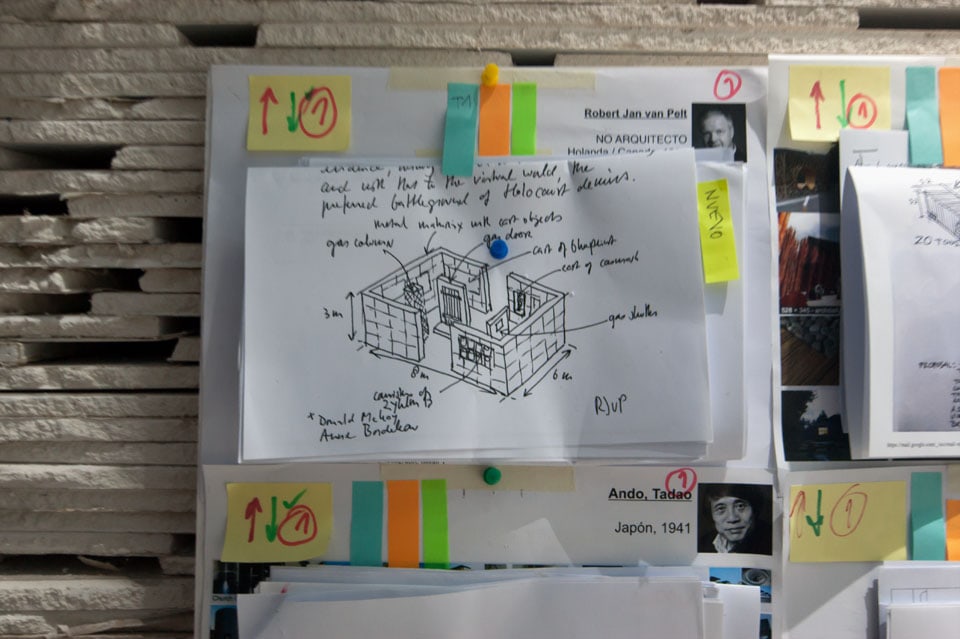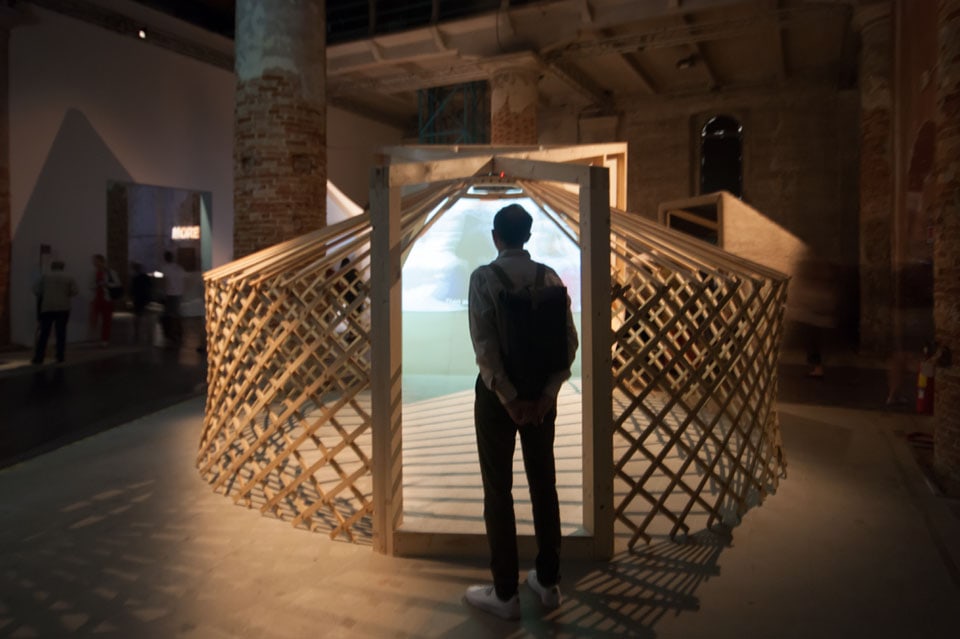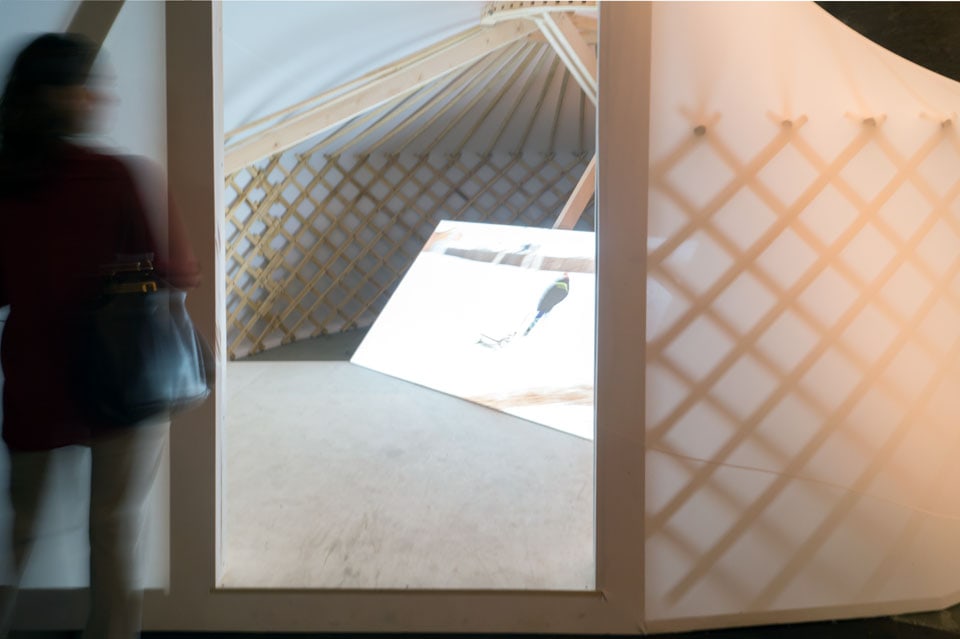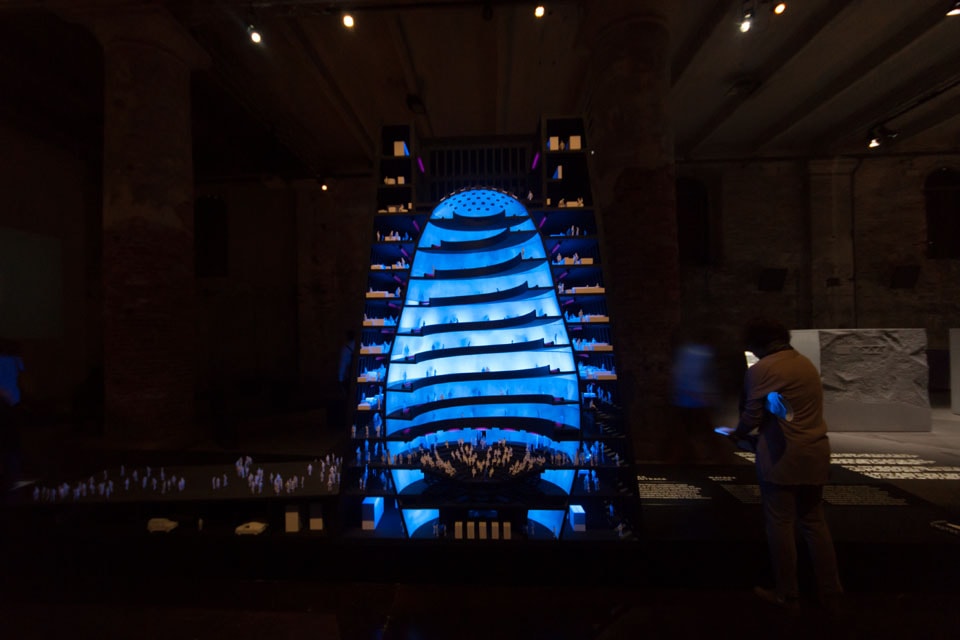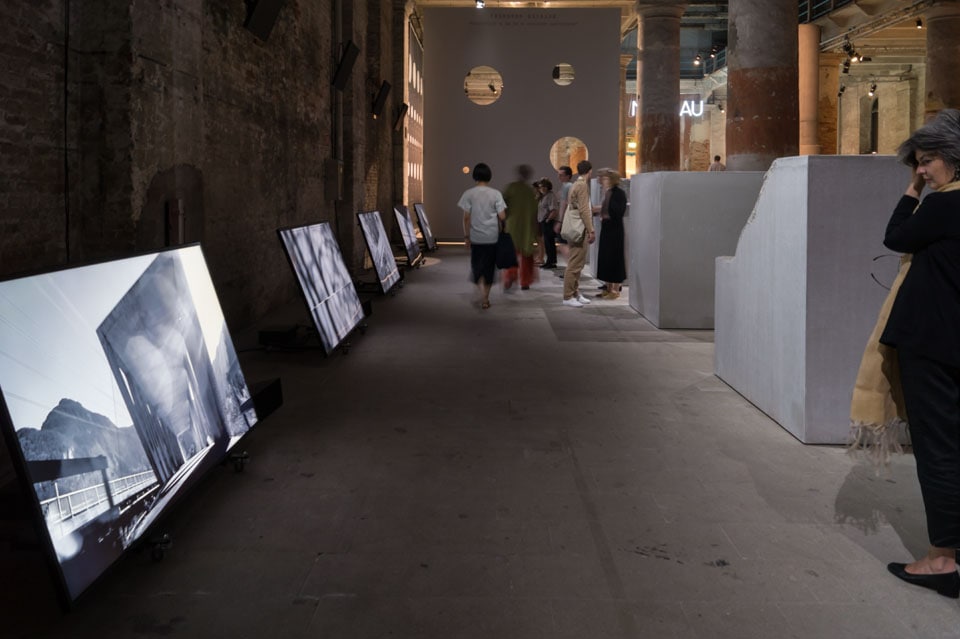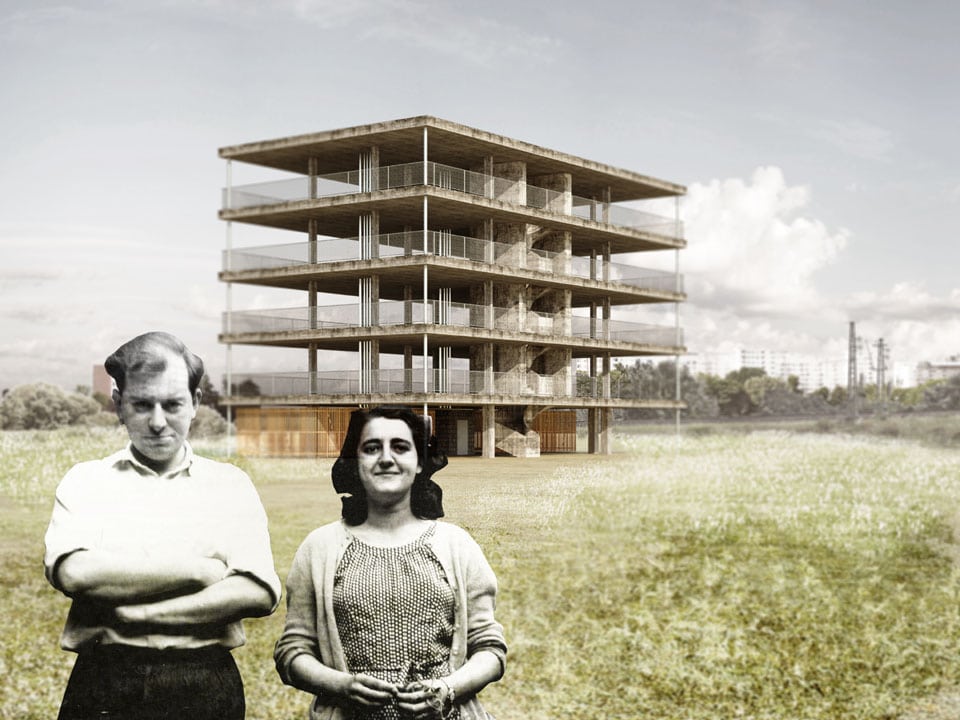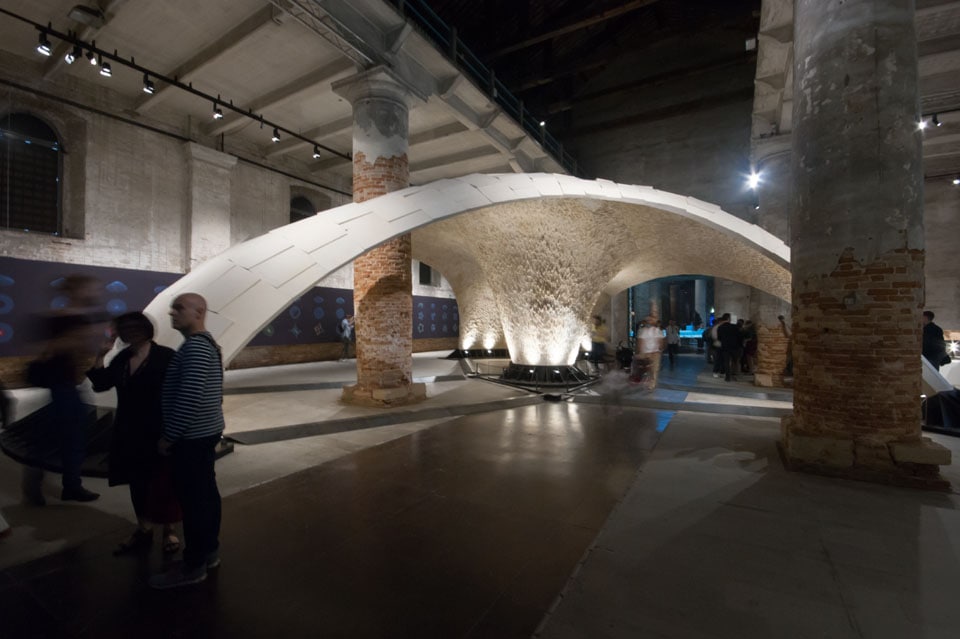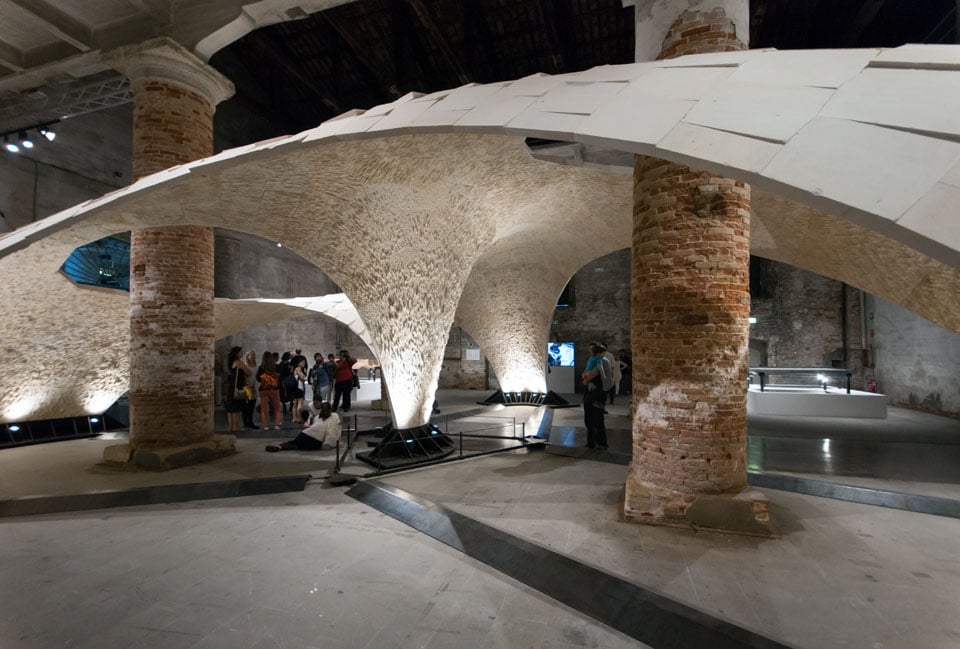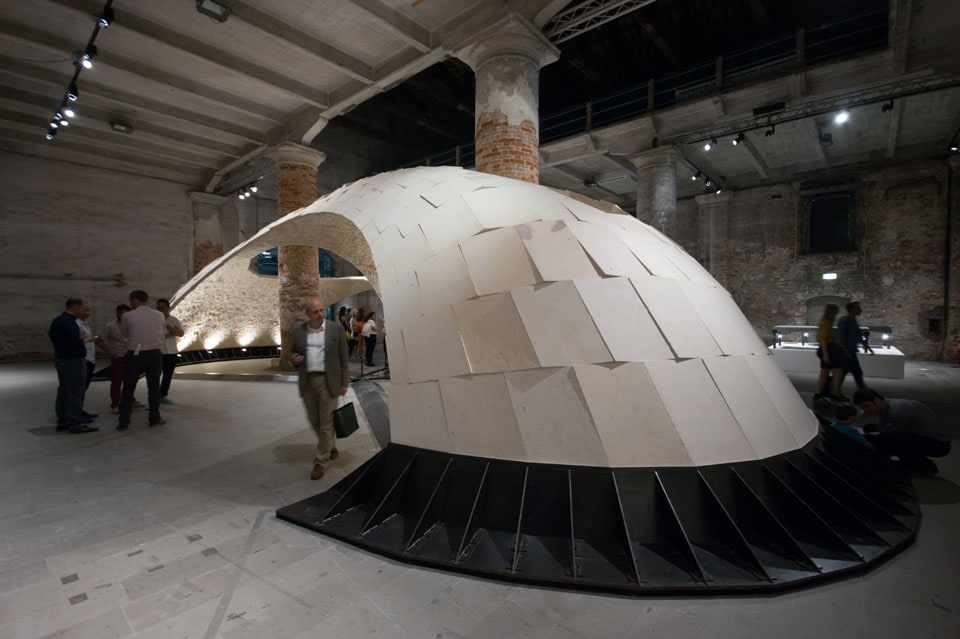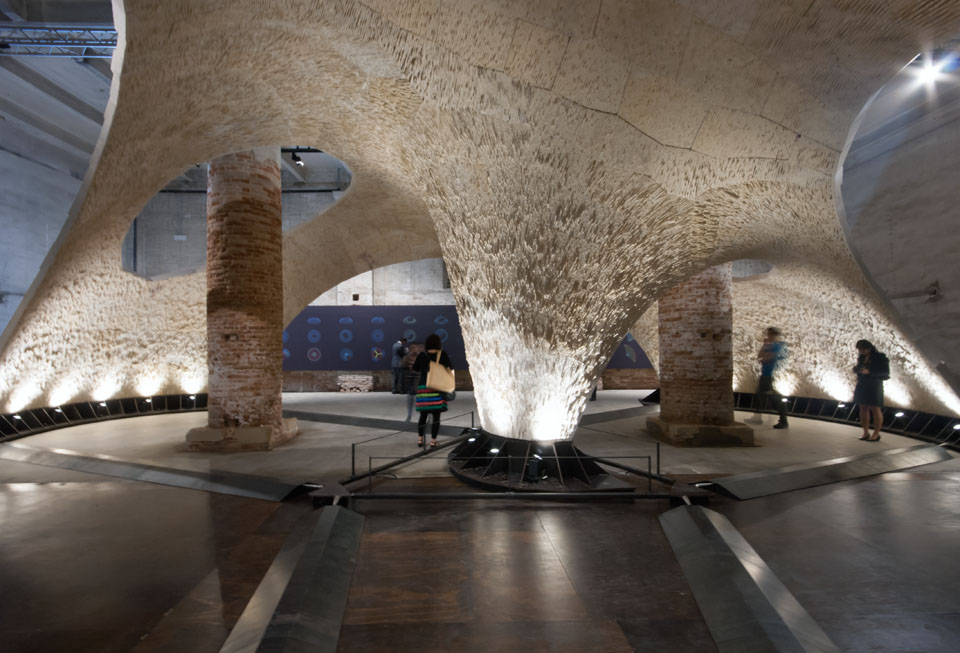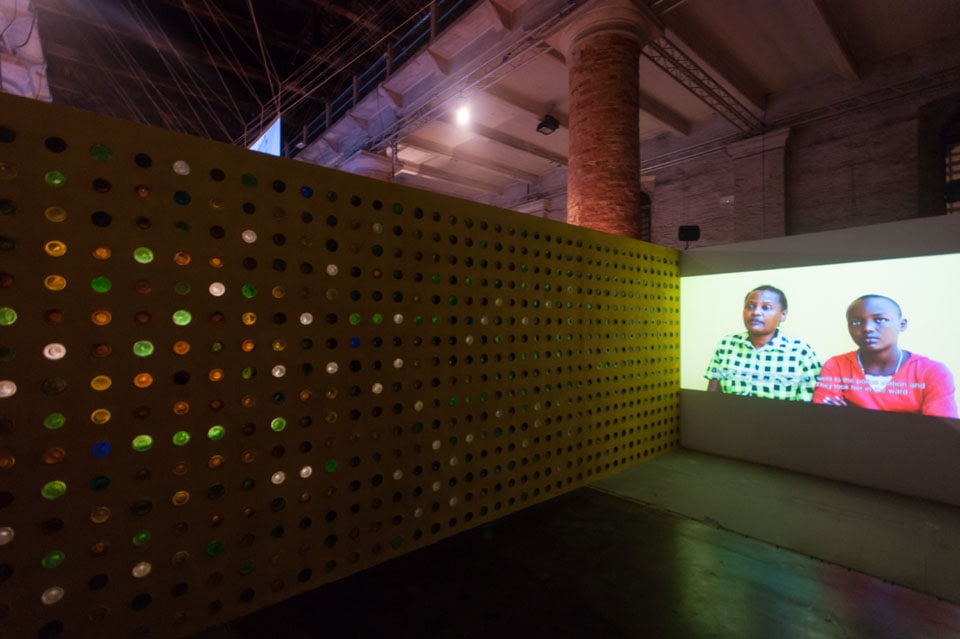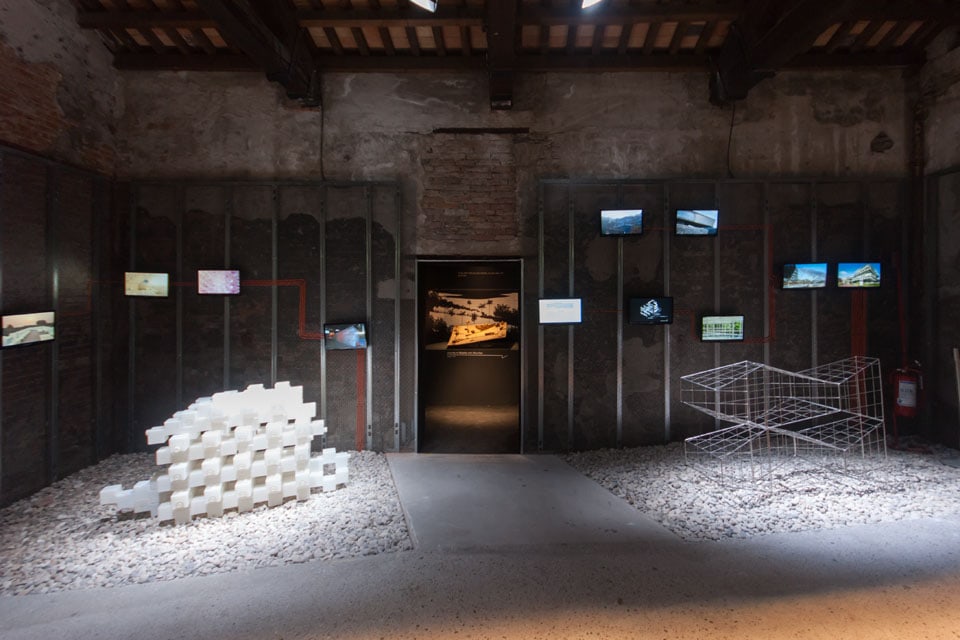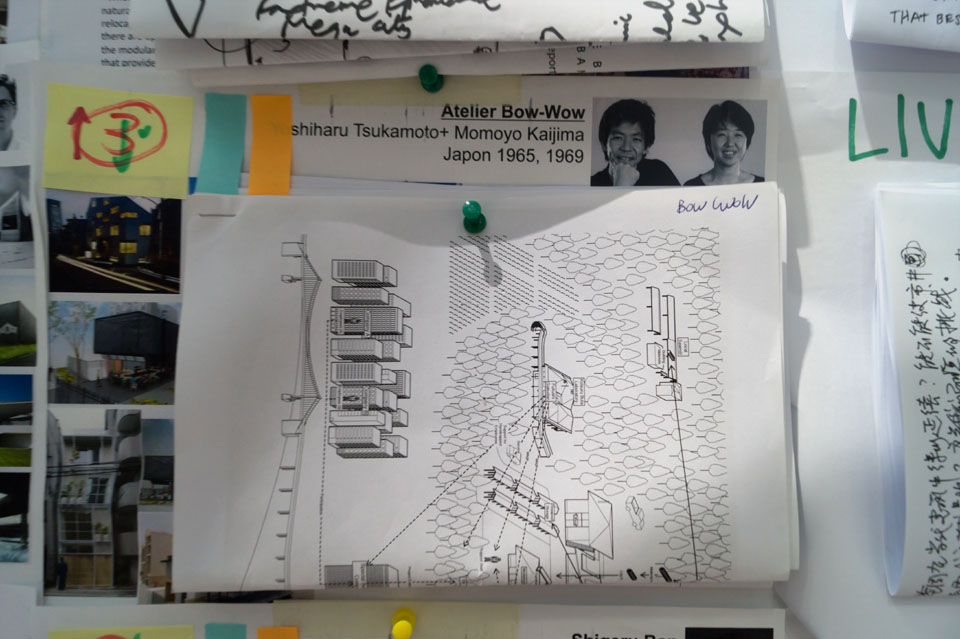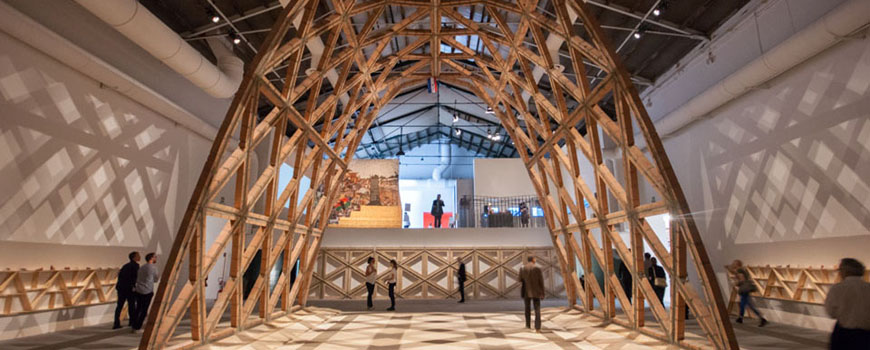15th Venice Architecture Biennale – Aravena’s exhibition part 2: Arsenale
exhibition - part 2 (Arsenale)
curator: Alejandro Aravena

Reporting from the Front: exhibition at Corderie of the Arsenale, curator: Alejandro Aravena
Inexhibit’s selection of works from Alejandro Aravena’s core exhibition at the 15th Venice Architecture Biennale; continuing from part 1: Giardini
The opening installation by Alejandro Aravena
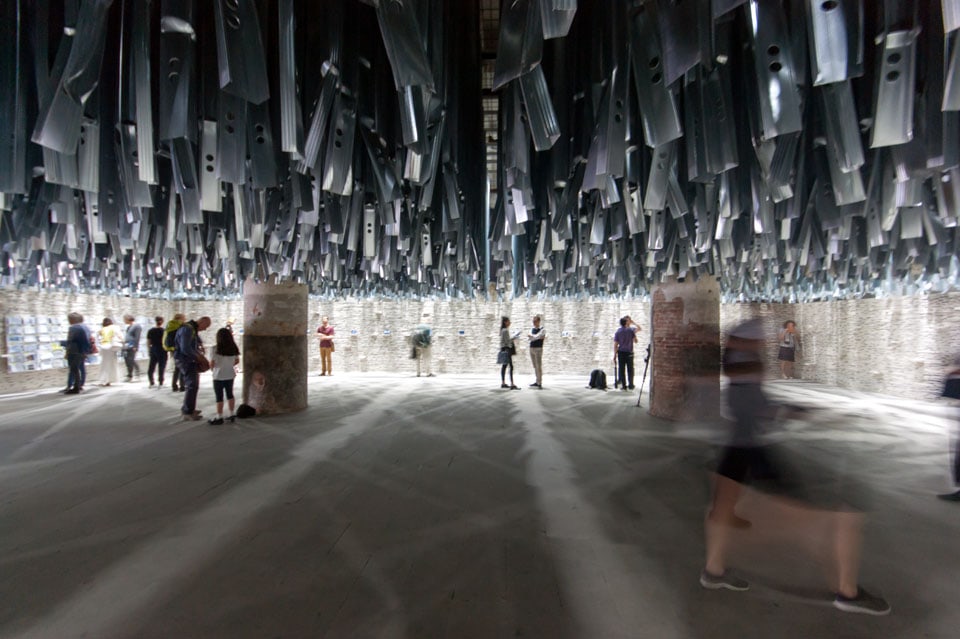

15th Biennale’s opening installation designed by Alejandro Aravena, photos © Inexhibit, 2016
Like that at the Giardini, also the core exhibition in the Corderie of the Arsenale opens with a large introductory installation, conceived by Venice Architecture Biennale director Alejandro Aravena, made with 100 tons of materials recycled from the previous Biennale.

The installation is composed of some 14km of metal studs hung to the ceiling and thousands of square meters of plasterboard fragments that entirely cover the perimeter walls.
Fastened to those dummy walls, a sequence of “low-end” micro-computers depicts through interactive videos the participants’ selection process; and, on the wall just right of the entrance door, the visitors find the conceptual sketches each of the invited architects has developed for his/her dedicated space.
Rural Urban Framework – The University of Hong Kong
Rural Urban Framework exhibition, installation views, photos © Inexhibit, 2016
Conducted within the Faculty of Architecture at The University of Hong Kong, the design collaborative Rural Urban Framework (Joshua Bolchover and John Lin) presents a research project aimed to improve dwellings in rural areas of Mongolia, especially addressed to those who will not adhere to the Chinese Government’s plan to relocate half of the inhabitants of Mongolia’s rural areas in newly-built high-density urban developments by 2030.
Bernaskoni – MATREX
MATREX by Boris Bernaskoni, installation views, photos © Inexhibit, 2016
MATREX. Multifuncional building, Skolkovo, Russia, 2014. © Boris Bernaskoni
MATREX, designed by Russian architect Boris Bernaskoni, is a multifunctional building recently completed in Moscow to accommodate dwellings, startup companies, and a museum.
The large truncated pyramid which forms the building’s envelope contains a vertical space shaped like a giant matryoshka doll.
Matrex is an example of how it can be possible to preserve quality and conceptual integrity, from inception up to completion, also in the case of large-scale building developments.
Marte.Marte Architects
Marte.Marte Architects, Schanerloch Bridge, Dornbirn, Austria, photo by Marc Lins Photography
Marte.Marte Architects exhibition, installation views, photos © Inexhibit, 2016
The work of Marte.Marte Architects investigates one of the most insidious fields of design: that of large infrastructures.
The research by the Austrian architectural office is aimed to “fill the gap” between the neutral functionality of such kind of works and their potential, often unexpressed, capability to contribute to the identity of a specific landscape, either an urban or a natural one.
BEL Sozietät für Architektur – Neubau on Königsberger Straße and Aleppoer Weg
Neubau, installation views, photos © Inexhibit, 2016
BeL Sozietät für Architektur, Allotment House, Hamburg, Germany, 2013, Base and Settlers©BeL
The urban developments designed by German architects BEL (Anne-Julchen Bernhardt and Jörg Leeser) are based upon the concept of incremental urbanization.
Compared to past cases, such as those developed in the 1960s in Latin America, the approach by BEL envisages the creation of multistory structures, composed of a simple array of columns and slabs, which can be “completed” and adapted to different functional and cultural schemes, thus fulfilling the specific characteristics and requirements of their inhabitants.
Block Research Group, ETH Zurich – Beyond Bending
Beyond Bending, installation views, photos © Inexhibit, 2016
Originating from a collaboration between the Block Research Group at the ETH University in Zurich, John Ochsendorf (MIT), Matthew DeJong (University of Cambridge), Phillipe Block (ETH Zurich), and the Escobedo Group, the project Beyond Bending combines antique building techniques with advanced design and manufacturing technologies.
Based on the investigation of compression-only structures, the objective is to create fluid three-dimensional forms made in stone without any steel reinforcement, therefore reducing their building costs and environmental impact.
The project presented at the Biennale is a complex-shaped dome made with a large number of simply-juxtaposed sandstone voussoirs.
Transsolar with Anja Thierfelder – Lightscapes . Local identity
Lightscapes-Local Identity, installation views, photos © Inexhibit, 2016
In the work of the German engineering firm Transsolar, advanced technology combines with traditional building techniques to utilize locally-available environmental resources at their best.
Their installation Lightscapes-Local Identity, presented at the Biennale and developed with Anja Thierfelder, is inspired by the work the office did in the United Arab Emirates.
For the Louvre Abu Dhabi museum designed by Atelier Jean Nouvel, Transsolar developed an ingenious solution for the natural illumination of the museum’s covered plaza; through a series of round “holes” cut in the vault and by exploiting the atmospheric dust created by millions of micro-particles floating in the ambient, they created a surprising visual effect which resembles a “rain of light” and recalls the atmospheres of Arabian mosques and madrasas.
The “architecture from the front” of the Finnish office Hollmén Reuter Sandman Architects
Hollmén Reuter Sandman Architects exhibition, installation view, photo © Inexhibit, 2016
Hollmén Reuter Sandman Architects exhibition, Women’s Centre Rufisque, scale model, photo © Inexhibit, 2016
Hollmén Reuter Sandman Architects, Women’s Centre, Rufisque, Senegal, 2004, © Helena Sandman
The work Hollmén Reuter Sandman Architects did in developing countries is particularly interesting because of the involvement of local communities in the design and building process and for their use of locally-sourced materials.
Among the most original aspects of the Finnish office’s approach to design is the “syncretic” combination of Scandinavian building standards with indigenous cultural codes, such as in their Women’s Centre completed in 2004 in the city of Rufisque, Senegal.
Tadao Ando – Punta della Dogana contemporary art center
Tadao Ando exhibition, installation views, photos © Inexhibit, 2016
Punta della Dogana contemporary art center, Photo by Tadao Ando
In his design for the Punta della Dogana art center, Tadao Ando had to cope with two opposing forces – typical of those cities in which mass tourism dominates, such as Venice.
Such forces were, on one side, the conservation of cultural heritage and, on the other, the desire to embrace and foster contemporary culture.
Such a conflict became evident when Tadao Ando proposed the construction of two tall “columns” to be positioned just outside the art center and which, for the architect, would have symbolized the beginning of a new life for the building.
The project on show at the Arsenale narrates this story and depicts how it can be difficult to create visionary architecture within a world-renowned historic urban environment.
Kengo Kuma – Fighting banality
Tadao Ando Architects & Associates exhibition, installation views, photos © Inexhibit, 2016
The section dedicated to Kengo Kuma at this year’s Biennale presents one of the most significant professional battles of the Japanese architect: that against the banal and serialized building materials produced by the industry.
While Kuma’s research is based on a diversified strategy, which includes rediscovering traditional techniques, yet updated through a contemporary approach, or investigating new methods to connect different materials to one another, the aim is always the same: to propose creative alternatives to industrial mediocrity.
The Timber Network – The work of Atelier Bow Wow in Japan
Atelier Bow-Wow exhibition, installation views, photos © Inexhibit, 2016
In a semi-abandoned rural district near Tokyo, in which the timber industry had flourished until a few decades ago, Atelier Bow Wow has developed, in collaboration with a Japanese NGO, the Timber Network project.
The program led to the construction of a new firewood supply plant to create work opportunities for older persons and disabled people residing in the area, while at the same time reinstating their relationship with the territory they live in.

The Venice Arsenale medieval dockyard complex is one of the venues of the Venice Biennale, It accommodates core exhibitions and several national pavilions
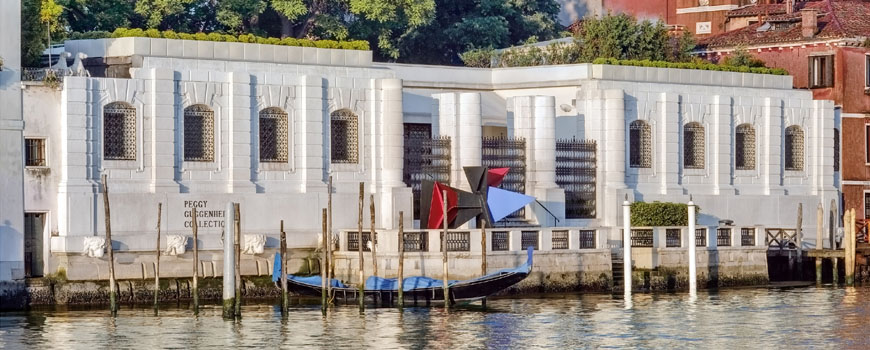
Venice
copyright Inexhibit 2025 - ISSN: 2283-5474



